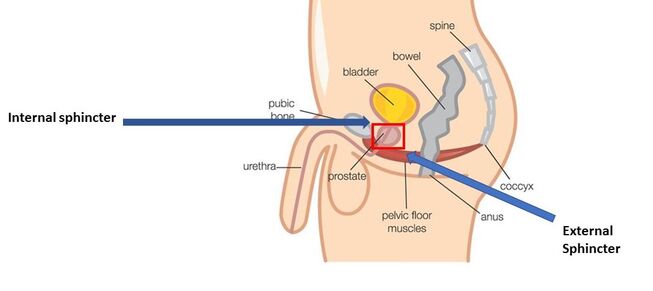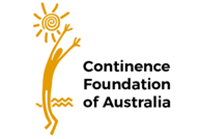
Prostate cancer is the most common cancer in men. It is known to affect 1 in 6 men over the age of 65 years (1). Fortunately, the treatment options AND outcomes are improving. The role of physiotherapy is often overlooked and not considered in the treatment journey before and after prostatectomy- prostate surgery. This post aims to raise some awareness of the impacts of cancer and how physiotherapy can play a crucial role in recovery. Prostatectomy is one of the treatment options your surgeon may advise, which is the removal of the whole prostate (radical prostatectomy).
As a result of this type of treatment, urinary incontinence and/or erectile dysfunction can occur which can be quite distressing. Your surgeon may recommend that you visit a pelvic floor physiotherapist prior to having surgery to assist with your recovery. A review of the anatomy, the image below shows the pelvic floor muscles (red) these are a group of muscles and connective tissues which create a supportive sling underneath the bladder and bowel for men. The prostate is located underneath the bladder. The valves that control the bladder are known as the internal and external sphincter as shown. The internal sphincter can be affected with surgery resulting in urinary incontinence.

The role of pelvic health physiotherapy
Physiotherapy can be beneficial prior to surgery to assist with this common side effect of urinary incontinence. A pelvic rehab specialist works to help you identify and train the pelvic floor muscles which assist with continence. These muscles house the external sphincter(pic) that has a role in bladder function too. Identifying and training these muscles is important to help with regaining continence earlier after surgery (2). It is recommended to start physiotherapy at least one month before surgery in addition to after.
Pre-operation rehabilitation aims to provide the following:
- An individualized approach to help understand your specific concerns
- Education: This is an important part as many men do not realize they have pelvic floor muscles!
- What and where are the pelvic floor muscles
- Why do a pelvic floor muscle training program
- Perform these exercises correctly
- What to expect after the surgery
- Address any pre-existing concerns and ensure additional support is in place – for example, a dietician or a pyschologist
- Assist in early recovery of incontinence and/or erectile dysfunction
Our physiotherapists may use machines such as a real-time ultrasound that provides both the therapist and yourself visual feedback of the muscles and if performing these exercises correctly. This is an excellent tool to assist you and ensure that you are performing the exercise correctly. They may use other methods to assist as it is IMPORTANT that these exercises are performed correctly (the image below is an example of what you both may see on the machine).

After surgery, it is recommended that you continue with your post-surgery rehabilitation. This will include:
- Post-surgical care – establish good bladder and bowels habits
- Pelvic floor muscle training
- Review your exercise technique
- Progression with your training program to include, strength, endurance, and high performance- depending on your goals
- Bladder training
- Assist return to activity and exercise including exercise therapy (reformer previously) known as Pilates available either via individual or group classes
- Additional support services
At Inner Active Pelvic Health Physiotherapy our physiotherapists aim to work closely with you, your surgeon, and the healthcare team to help reach your goals in achieving optimum recovery and health. Treatment encompasses education, holistic pelvic health, and physical health alongside the prescription of a graded exercise program to help you to return to doing the things you love.
If you or know of anyone faced with the effects of prostate cancer treatment and are having issues, a pelvic health physiotherapist can help.
Contact us here or can send an email to info@inneractivephysio.com.au
Telehealth appointments are also available.
Author
Tafy Seade
BSc Honours Physio, Post Grad Cert Women’s Health, Pelvic Floor and Incontinence
References:
(*images courtesy of the Continence Foundation of Australia)
1) Understanding Prostate Cancer, Cancer Council Australia © 2020. Last medical review of source booklet: March 2020.
2)Filocamo MT, Li Marzi V, Del Popolo G, et al. Effectiveness of early pelvic floor rehabilitation treatment for post-prostatectomy incontinence. Eur Urol. 2005;48:734–738. doi:10.1016/j.eururo.2005.06.004
Useful resources





